I’m a huge fan of many different types of
blues guitarists—everyone from SRV to
B.B. King. I’m also a real sucker for jazz guitarists
like Joe Pass and Wes Montgomery.
One of my favorite things is to play blues
that’s mixed with the essence of jazz. In
order to mix both styles, you need to think
about harmony and chord changes more
than just burning through scale patterns.
I focus on simple ideas and hate to think
too much when I am playing. Triads have become a really cool tool for me because
they provide the harmonic colors I’m looking
for, yet don’t require a lot of over-thinking.
In this lesson, we’re going to look at
creative ways to use triads in a minor blues.
I often hear my students ask, “What
scales are you playing? How do you make
those interesting lines?” Don’t get me
wrong, I really enjoy playing traditional
blues phrases, but I also want to make my
solo connect with the chord progression.
I think a lot of players have trouble going
beyond playing pure pentatonic shapes.
If you find yourself only following the
same pentatonic scale patterns, then you
may get bored with your solo rather quickly.
Don’t worry! All you need to do is pay more
attention to the chord changes than the scales
when you’re soloing. Triads are some of the
simplest chord forms. This application of
triads will help you outline specific chord
changes while you are playing your favorite
bluesy phrases. Basically, I don’t want you to
become locked into those old minor-pentatonic
shapes.
The basic blues progression uses only
three chords (I, IV, and V). Blues music
has very simple chord changes, yet is very
deep. The goal is to hear the chord movement
rather than just thinking about the
shape of the various pentatonic scales. Let’s
get a handle on this technique by playing
over minor-blues chord changes. For
starters, we’ll use the progression in Fig. 1.
Make sure to check out the bVI to V chord
movement in measures 9-10. This gives the
minor-blues progression a “jazzier” feel.
Triads consist of only three notes—the root, 3rd, and 5th. Simple, right? Since there are only three combinations of the notes, you can play three different inversions (or shapes). In Fig. 2, you can see the inversions of an A major triad on the top three strings. The first chord is in root position, since the root is the lowest note in the chord. Moving up the neck we have the 1st inversion with the 3rd as the low note, and finally we end with the 2nd inversion with the 5th in the bass. This 2nd inversion is sometimes referred to as the “triangle shape” and looks just like an open-position D chord, just moved up the fretboard.
Download example 2 audio...
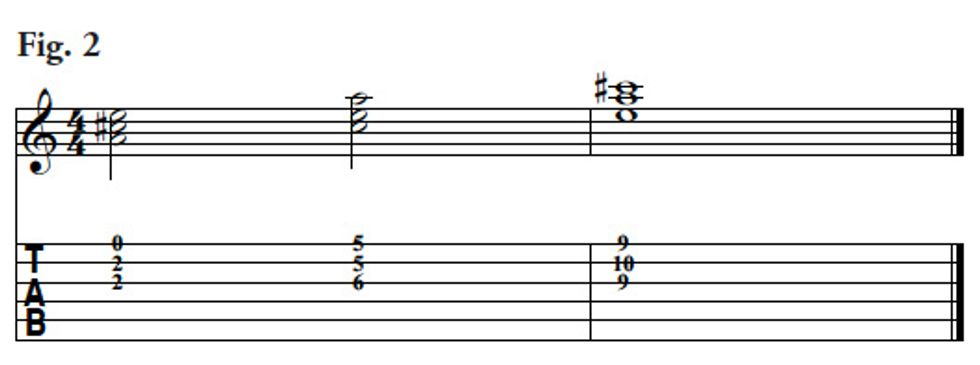
Once these shapes are comfortably under your fingers, start to move them around to other string sets. If you think about not only the note names, but also the degree names, it will make transposing them to other keys much easier.
For the minor triads, all we need to do is lower the 3rd a half-step (one fret). In Fig. 3 you can see the A minor triad shapes on the top three strings. My advice is to try to learn the minor shapes in relation to the major shapes. That way you should be able to change from major to minor without having to rely on only visual memorization.
Download example 3 audio...
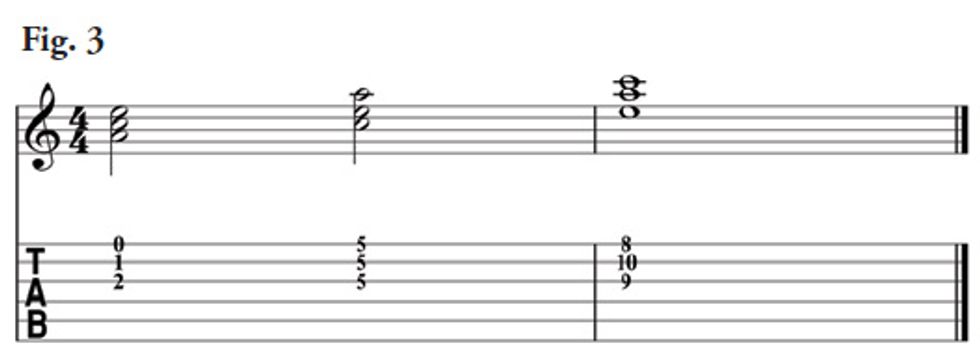
Now it’s time to use these triads over the minor blues progression from Fig. 1. In Fig. 4, I’ve written an easy exercise using these triads. Play each chord slowly at first. Don’t think too much when playing these, but focus on learning the degree names of each chord until you can play them smoothly. That’s important. At first it will sound like an exercise, but pretty soon (with some added rhythmic variety), it will become more musical. Learning these concepts in a very specific way will allow you to be totally free when you improvise. Once these shapes are comfortable on the first three strings, start to move them to other string sets. In Fig. 5, you can see these exact same chords on strings 4-3-2.
Download example 4-5 audio...
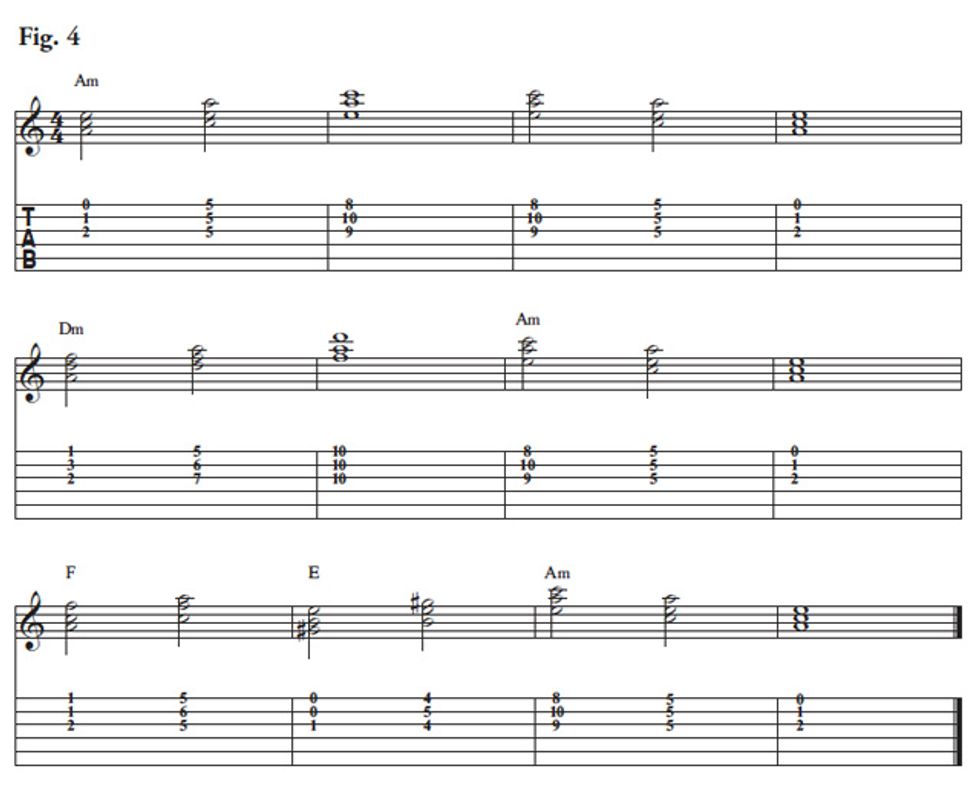
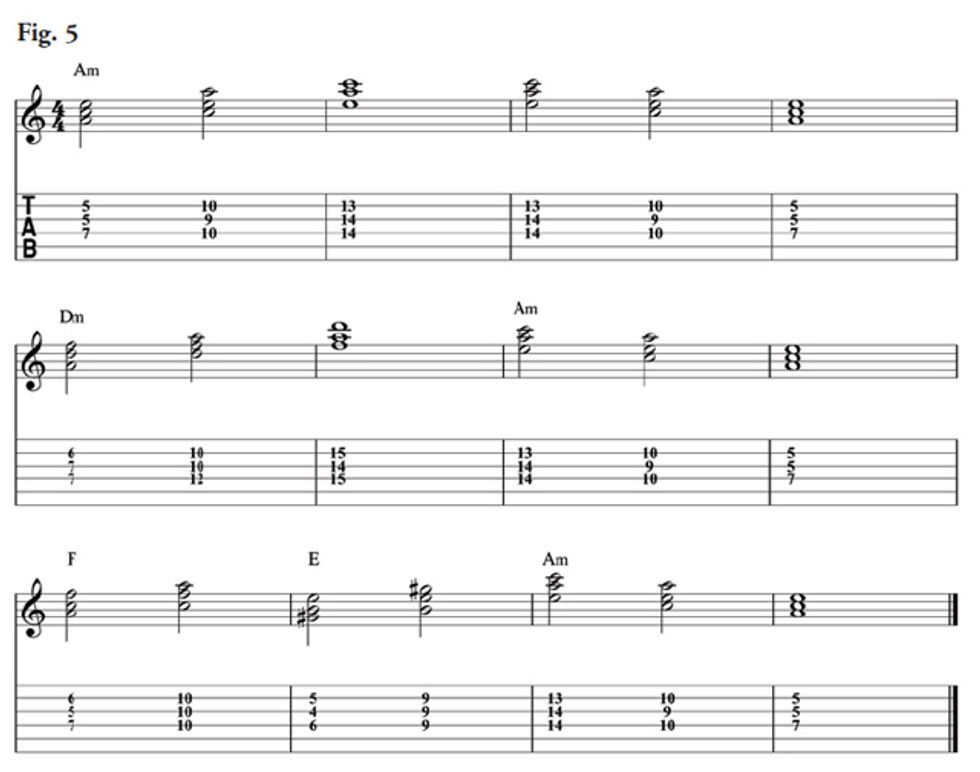
These shapes become very useful for not only comping, but also soloing. Feel free to add some of your favorite blues phrases to these triads. Many of them probably fall comfortably within these shapes already. As always, listen to such masters as Freddie King, Eric Clapton, and Buddy Guy to really understand phrasing and comping in a blues setting.
 Tomo Fujita has served on the faculty of
the Berklee College of Music since 1993
and has mentored students such as John
Mayer and Eric Krasno. His latest album,
Pure, features Steve Gadd, Will Lee, Steve
Jordan, and Bernard Purdie. For more
information about his best-selling books
and DVDs, visit tomofujita.com.
Tomo Fujita has served on the faculty of
the Berklee College of Music since 1993
and has mentored students such as John
Mayer and Eric Krasno. His latest album,
Pure, features Steve Gadd, Will Lee, Steve
Jordan, and Bernard Purdie. For more
information about his best-selling books
and DVDs, visit tomofujita.com.

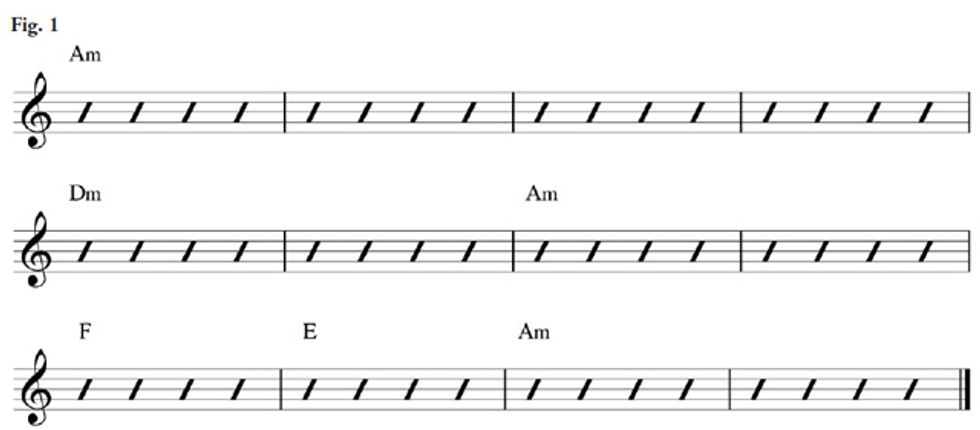








![Rig Rundown: Russian Circles’ Mike Sullivan [2025]](https://www.premierguitar.com/media-library/youtube.jpg?id=62303631&width=1245&height=700&quality=70&coordinates=0%2C0%2C0%2C0)














